AdaptiFit: Smarter fitness,personalized for you
Impact
The app reduced the effort required to track expenses by streamlining categorization and surfacing insights visually.
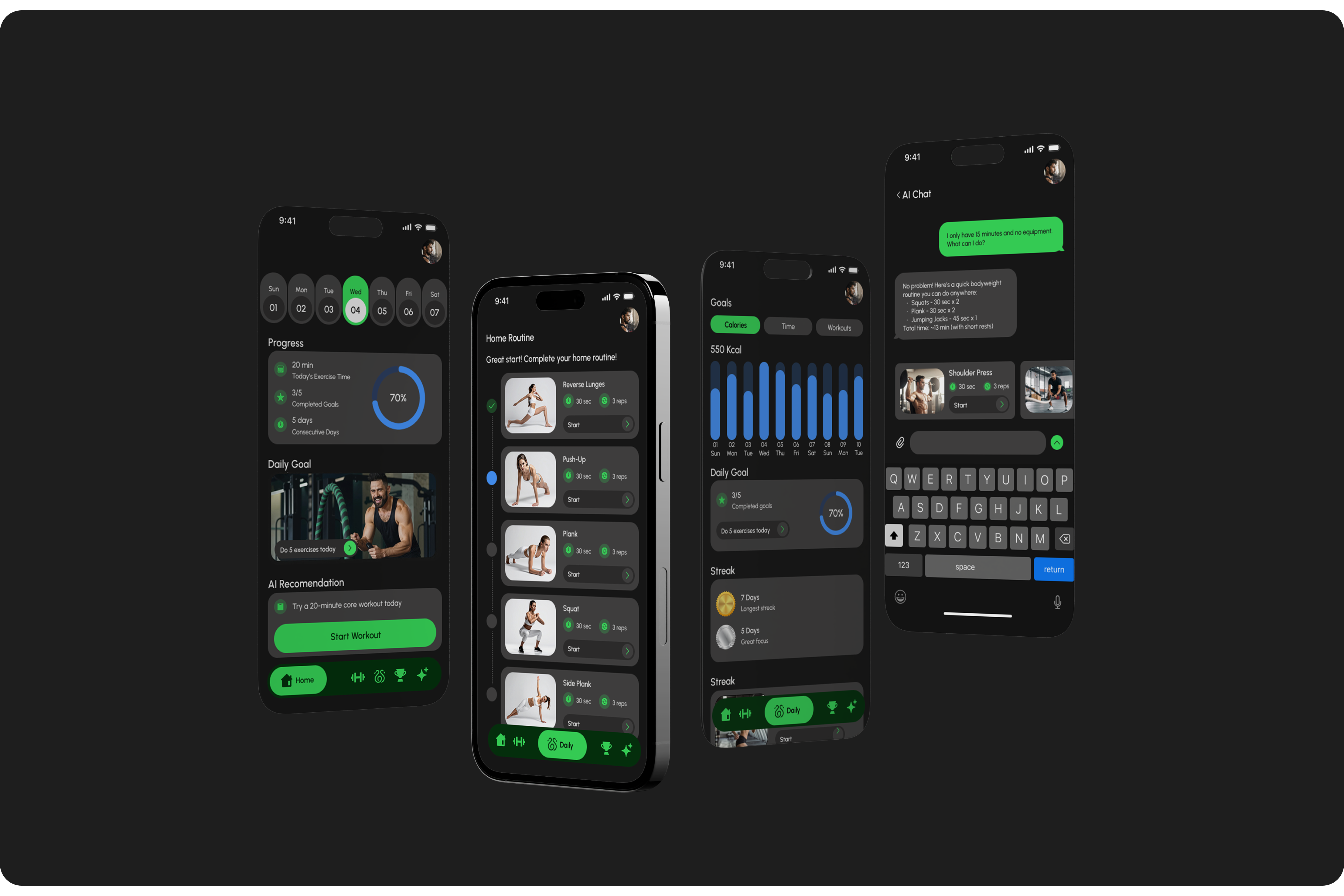
Client & Product
AdaptiFit is an AI-powered fitness app designed to deliver personalized workout experiences. Unlike static workout planners, AdaptiFit adapts in real time to a user’s goals, available equipment, schedule, and feedback. The product combines AI coaching, progress tracking, and adaptive recommendations to make fitness guidance more accessible and motivating.
Background
The idea for AdaptiFit emerged from the need for a workout app that feels as dynamic as having a personal trainer. Many existing solutions are either too generic or too rigid, leaving users unmotivated. The challenge was to create a mobile app that harnesses AI to provide customized workouts, intelligent progress tracking, and real-time adjustments—all while maintaining a clean and intuitive UX/UI that could scale with diverse user needs.
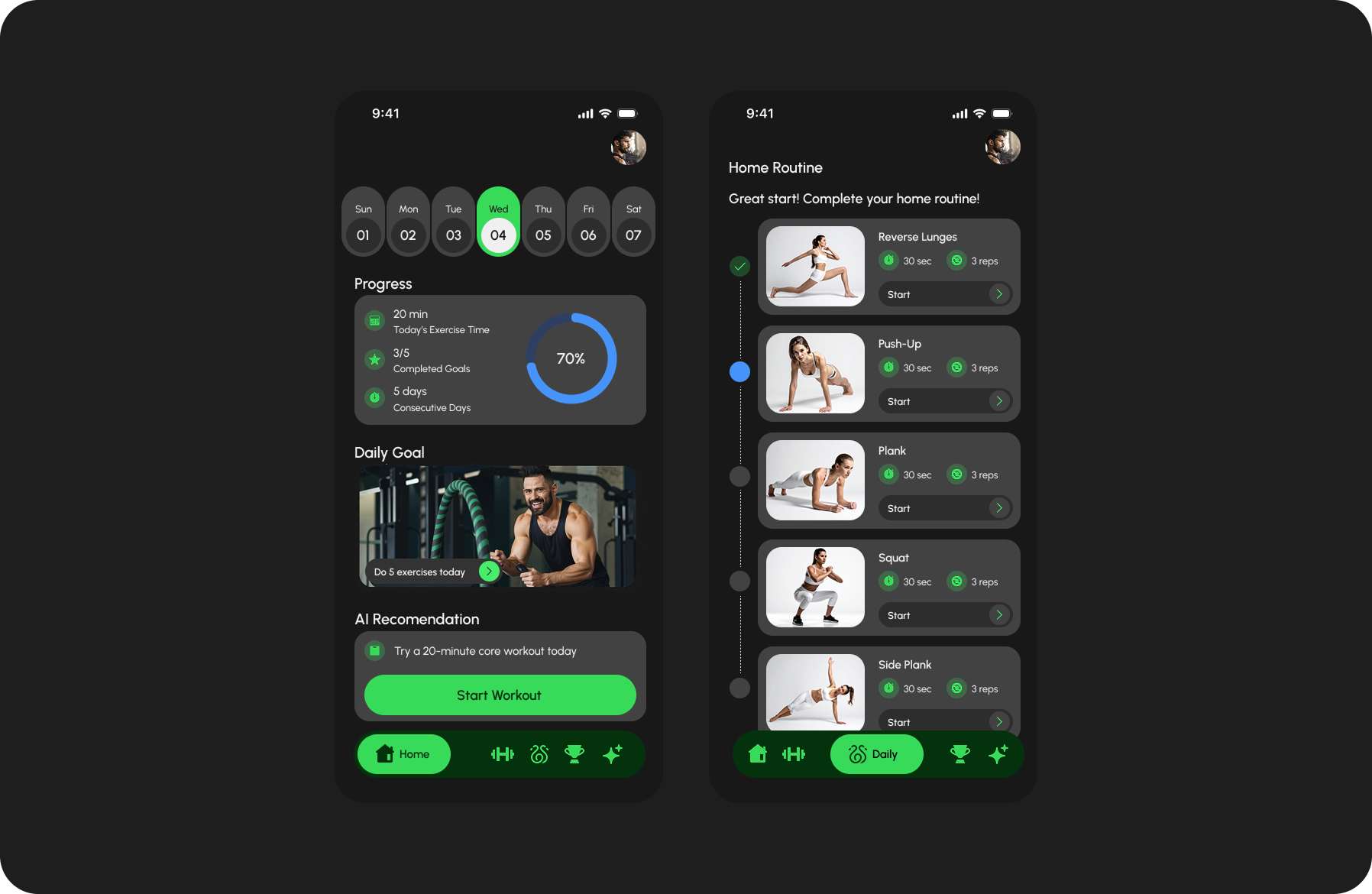
Business Requirements & Constraints
The project aimed to provide users with an intelligent, scalable, and user-friendly fitness solution. Key goals included enabling adaptive workouts through AI-driven recommendations, supporting diverse user goals, and offering cross-platform scalability. Constraints involved reliance on AI training models for personalization accuracy, ensuring accessibility across varied demographics, and designing a clean UI that balanced real-time feedback with usability.
ADAPTIFIT'S OBJECTIVES FOR THE PRODUCT
. Delivering adaptive fitness recommendations that personalize workouts based on time, goals, and available equipment.
. Designing a scalable system to support new workout categories, AI model updates, and cross-device integration.
. Ensuring an approachable user experience by simplifying complex AI outputs into clear, motivating, and actionable guidance.
ADAPTIFIT'S OBJECTIVES FOR THE PRODUCT
. Delivering adaptive fitness recommendations that personalize workouts based on time, goals, and available equipment.
. Designing a scalable system to support new workout categories, AI model updates, and cross-device integration.
. Ensuring an approachable user experience by simplifying complex AI outputs into clear, motivating, and actionable guidance.
Challenges
The main challenge was creating an AI-driven experience that felt trustworthy and human while still being technically feasible. Since personalization required real-time processing, the design had to accommodate quick AI interactions without overwhelming the user. Another constraint was designing for both beginners and advanced users—striking a balance between simplicity and depth.

Market UX/UI Research
I conducted a competitive analysis of leading fitness apps, reviewing their personalization, tracking, and motivational features. Apps like Nike Training Club offered strong workouts but lacked adaptability, while Fitbod excelled in personalization but often felt complex for beginners.
Insights from this research highlighted an opportunity for an AI-first app that combined adaptability with simplicity.
Insights from this research highlighted an opportunity for an AI-first app that combined adaptability with simplicity.

Wireframing
We began by mapping out key user flows, including workout generation, session tracking, AI chat, and progress review. Wireframes focused on clear hierarchies, intuitive navigation, and modular layouts that could flex as more features were added. Once approved, these wireframes evolved into high-fidelity mockups aligned with the visual identity.
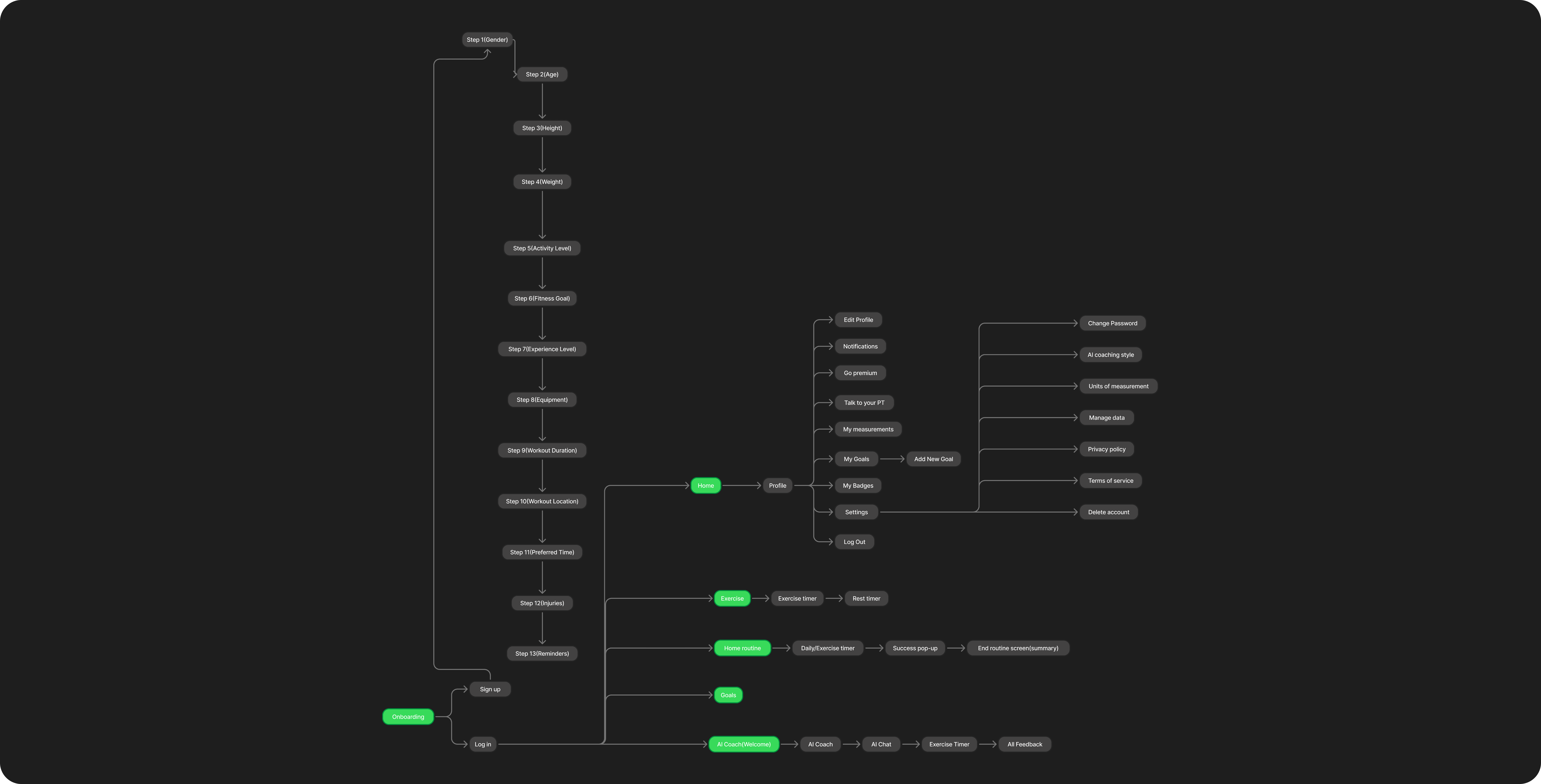
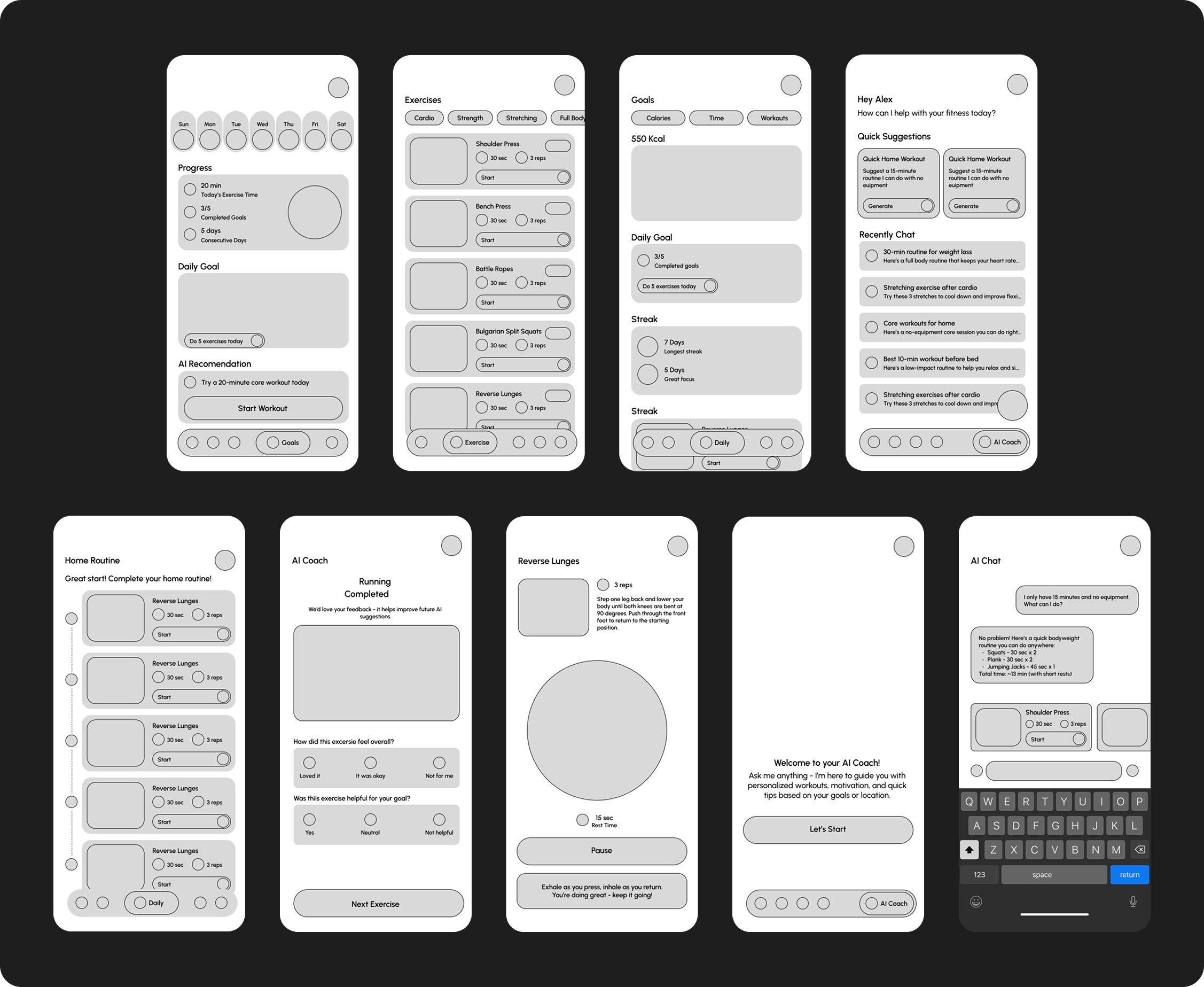
Testing Hypothesis
Usability tests with target users were conducted to validate two key hypotheses. First, we believed that a conversational AI coach would reduce intimidation by simulating natural trainer interactions, making fitness guidance feel approachable and supportive. Second, we hypothesized that integrating visual feedback elements such as timers, streaks, and goals would increase motivation and drive higher workout completion rates. The feedback confirmed both assumptions, with testers reporting stronger engagement, improved consistency, and a heightened sense of accountability throughout their fitness journey.

Selected UX/UI Improvements
Here are some design approaches that served as the foundation for the whole system redesign:
1. AI CHAT INTEGRATION
Instead of traditional dropdowns, users can type or speak naturally to the AI, which generates personalized routines instantly. This interaction makes the app feel conversational and adaptive.
Instead of traditional dropdowns, users can type or speak naturally to the AI, which generates personalized routines instantly. This interaction makes the app feel conversational and adaptive.

2. DYNAMIC WORKOUT TRACKING
Circular timers, real-time progress indicators, and motivational microcopy were introduced to keep users engaged mid-workout.
Circular timers, real-time progress indicators, and motivational microcopy were introduced to keep users engaged mid-workout.
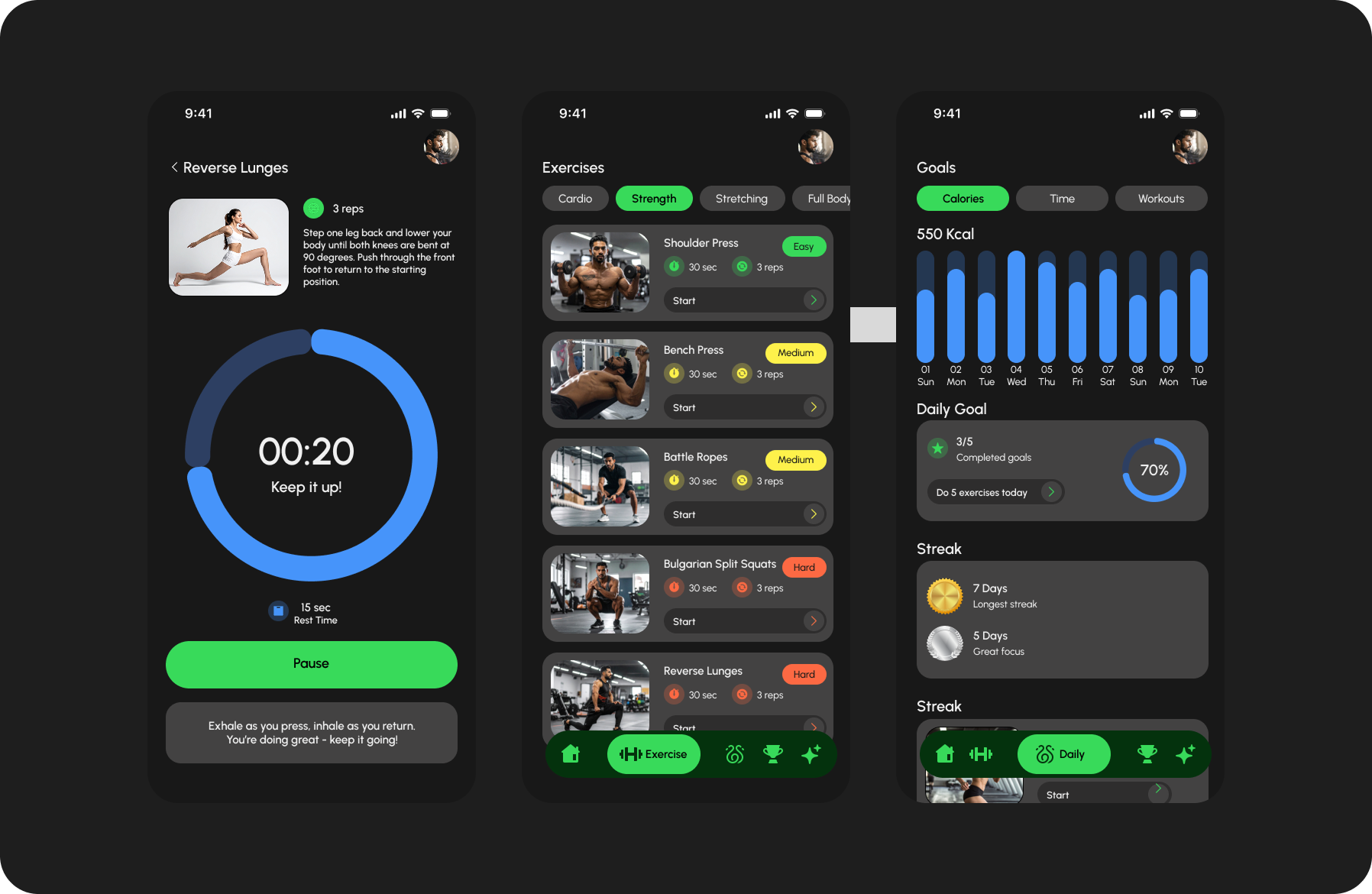
3. FEEDBACK LOOP
After each workout, users rate sessions, feeding the AI engine for better future recommendations—making the system smarter and more personalized over time.
After each workout, users rate sessions, feeding the AI engine for better future recommendations—making the system smarter and more personalized over time.

Impact
AdaptiFit provides a holistic AI-driven workout experience that adapts to users rather than forcing them into rigid routines. By blending conversational AI, motivational design, and adaptive tracking, the app demonstrates how fitness tech can feel personal and scalable. The final prototype not only solved gaps found in competitor research but also created a foundation for expanding into wearables and voice-driven coaching in the future.
Summary
AdaptiFit redefines fitness apps by merging AI intelligence with approachable design. Through research-driven decisions, the app delivers a personal trainer-like experience while keeping users motivated and engaged. The result is a scalable, human-centered solution for the future of digital fitness.
